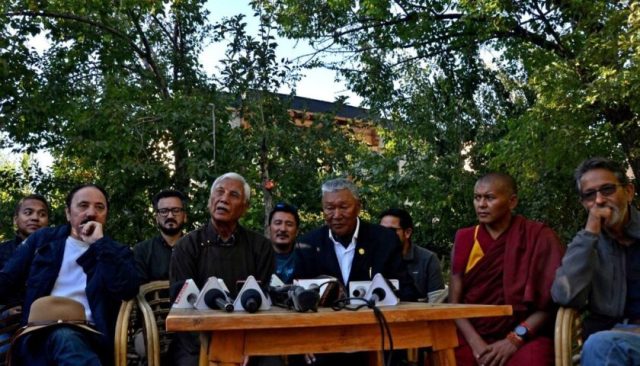A major scuffle, which included stone-pelting, took place between Indian and Chinese soldiers along the Line of Actual Control at eastern Ladakh in the western sector on Tuesday even as the tense troop stand-off in Doklam area+ in the eastern sector remains locked in a stalemate.
Sources said the confrontation between the rival soldiers took place on the north bank of the Pangong Tso (Tso means lake) in eastern Ladakh, two-thirds of which is controlled by China as it extends from Tibet to India, early on Tuesday morning.
“There was a scuffle between the two sides, which included some stone-pelting as well, after Indian soldiers blocked two attempts by People’s Liberation Army troops to enter Indian territory at the Finger-4 and Finger-5 areas early in the morning,” said a source.
“Personnel from both sides received some injuries in the stone-pelting. The rival troops later pulled back from the confrontation site after banner drills to defuse the situation,” he added.
But the Army, on being contacted, refused to say anything once again. The PLA soldiers continue to needle Indian forces in all the three sectors of the 4,057-km LAC — western (Ladakh), middle (Uttarakhand, Himachal) and eastern (Sikkim, Arunachal Pradesh) – in the backdrop of both sides having militarily reinforced their positions due to the Doklam standoff near the Sikkim-Bhutan-Tibet tri-junction, as reported by TOI earlier.
Late last month, 10-15 PLA soldiers had ” transgressed ” almost one km into a disputed pocket – a mutually agreed “demilitarized zone”– at Barahoti in the Chamoli district of Uttarakhand two times in quick succession.
Eastern Ladakh, in particular, has emerged as a major flashpoint between the two armies, especially in the areas of Chumarr, Depsang and Pangong Tso, over the last several years. Located at an altitude of 13,900-feet across the Changla Pass, Pangong Tso is a 134-km long brackish lake in which both armies have also deployed armed boats against each other. There are boat, motorised and foot-patrol transgressions on a regular basis in the area. The region became an even bigger flashpoint when, during the 1999 Kargil conflict with Pakistan, China even constructed a “track” right up to the lake’s southern bank.
“Transgressions occur due to differing perceptions between India and China about where the LAC actually lies, right from eastern Ladakh to Arunachal Pradesh. Around 300 such transgressions by the PLA are recorded every year,” said a source.
On the eastern front, China remains adamant about Indian troops unilaterally withdrawing from the ongoing face-off in the Doklam area, which is actually Bhutanese territory but coveted by China. The Doklam imbroglio, of course, is different from the usual transgressions across the LAC since it is located in a third country (Bhutan), and India has reinforced its military posture near the tri-junction in the face of escalating rhetoric from China.
Scuffle between Indian and Chinese troops in Ladakh as two incursion bids by PLA foiled




